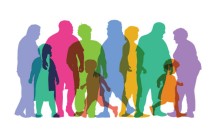Online Class: Domestic Violence 101

no certificate
with CEU Certificate*
-
11Lessons
-
23Exams &
Assignments -
3,087Students
have taken this course -
8Hours
average time -
0.8CEUs
Course Description
- What is Domestic Violence?
- Who are the Victims?
- Recognizing the Signs of Domestic Violence
- Why Victims Stay with Abusers
- How You Can Help Victims of Domestic Abuse
- Legal Issues such as: PFA's and PRO's
- What the police and courts can and can't do
- Handling divorce and custody issues
- How to Keep Safe such as: Safety Measures for yourself and your children
- Escape plans in case you need to flee
- Understanding who to turn to in an emergency
- The After-Effects of Domestic Abuse
- Moving On: Relationships After Abuse
- The fall-out for families
- Steps to take for success
- Helping Domestic Abuse Survivors
- Stopping the Cycle of Abuse
- Stopping Abuse Forever
Course Motivation
There are many misconceptions about domestic violence, among them that it is a problem primarily of the lower classes and the poor or that it is only women who are victims. In fact, no one is immune to domestic violence and many people would be surprised to discover that they probably kn
Domestic abuse or domestic violence is any act of abuse, intimidation, or terror, committed deliberately against a partner, spouse, parent, or child for the purpose of controlling their behavior in an unhealthy manner. ow someone right now who is the victim of some form of domestic violence.
Many actual cases of physical violence begin as domestic abuse; that is, the person may begin by using intimidation tactics, verbal abuse, and other methods of scaring the victim into complying with their demands without ever physically assaulting the person. In their minds, this is not "domestic abuse" because they are not actually laying their hands on the victim. Do not let this excuse deter you from intervening when you suspect domestic abuse. Verbal or emotional abuse is just as devastating as physical abuse and often escalates to physical abuse if it is not stopped.
For the purposes of this course, we will use the terms "domestic abuse" and "domestic violence" to mean any kind of abuse, whether physical, emotional, or verbal. When it is necessary to differentiate, we will clearly define to which type of abuse we are referring. Remember that, for victims, an attacker who is inflicting hateful words on his or her victim can do a great deal of mental and emotional damage.
It is important to keep in mind that abuse is not a result of the abuser losing control of himself or herself out of anger. Abusers are trying to dominate and control their victim. There are several reasons we know that abusers are not losing control when they abuse the victim.
- Abusers are very specific in who they abuse. They do not "lose control" with friends, co-workers, or strangers who upset them, indicating that they have self-control. Instead, they wait until there are no witnesses and batter their chosen victim.
- When it is to their advantage, abusers can stop battering, examples include times when the police arrive or a relative or neighbor shows up to intervene. By the time a witness shows up, the abuser usually appears calm and serene.
- The abuser is usually selective about where he or she punches or kicks in order to hide the evidence of the assault. An enraged or out of control attacker could not control where the blows landed.
Physical Abuse
Physical abuse is what most people think of when they hear the phrase "domestic violence." It can run the gamut from a slap across the face to punching, hitting, stabbing, and can eventually lead to extended assault and death.
Often, victims excuse the abuse because it starts slowly and escalates over time. For instance, a man who lightly shoves a woman during the course of an argument may later claim that it was "just in fun," or that he was "only joking," and insist that the victim is overreacting. The victim, in an effort to salvage what she views as a loving relationship, will overlook the incident and convince herself that it will not happen again. This pattern will occur repeatedly and is quite common, with the woman receiving many minor injuries over time until she becomes used to the pattern and begins to see it as almost normal.
Some of the most common injuries received by victims of physical abuse include bruises and black eyes, which can easily be explained away as being caused by a fall or a walk into a door or other obstacle.
Eventually, the injuries will escalate from bumps and bruises to broken bones, lacerations, and other injuries that require medical intervention. Bruised organs from blows to the torso are also common. In fact, 25 percent of all battered women who visit the emergency room require immediate hospitalization.
Many abusers become adept at assaulting their victims in ways that inflict pain but can be hidden from others. Hitting the victim on the torso, back, or upper legs is common. Unfortunately, shame will often keep the victim from reporting these injuries and they will become a participant in protecting their abuser.
Emotional and Verbal Abuse
Although emotional and verbal abuse are not what traditionally come to mind when people think of domestic violence, nevertheless, they are almost always the forerunners to physical abuse and are forms of domestic abuse in their own right. They leave devastating emotional scars that can take years to recover from and cause psychological damage to all family members.
Many abusers use emotional and verbal abuse to control their victims and make sure that they do not leave them or defy them. In this way, even when the abuse turns physical, the victim will remain with them as a "willing" target (although that is not an accurate term). No victim is ever a willing participant in a violent act. Instead, they have been conditioned to the point that they simply can no longer see an alternative. We will talk about this at length in a later chapter.
Emotional abuse, like any kind of domestic abuse, is about dominance and control. The abuser will use unfair tactics such as guilt, shame, intimidation, and fear to gain power over the other person. Several components to emotional abuse often include elements of verbal abuse.
Types of Emotional or Verbal Abuse
Unrealistic Expectations. The abuser demands your constant attention to the exclusion of all else, even when they know that you cannot possibly meet these standards. They expect you to always be home at a certain time, even if traffic or weather conditions make this impossible, and blame you if you are late. You are constantly criticized for not meeting their needs, even when the reasons are beyond your control and the expectations were unrealistic to begin with. No matter how much you do, it is never enough.
Demeaning or Belittling. This is often a form of verbal abuse and can take the form of a "parent-child" dynamic, where the abuser treats the victim in a child-like manner, constantly correcting the victim as though he or she is a child who needs discipline and guidance in every area of life. Belittling comments about appearance, how tasks are completed, and insults are all part of the pattern of demeaning abuse. Name calling, accusations, and insults are also common forms of belittling behavior. This type of behavior wears away at self-esteem and becomes imprinted on the mind of the victim until they begin to believe that it is true. Over time, they may see themselves through their abuser's eyes as ugly, worthless, stupid, or whatever words the abuser has used.
Isolation. Many abusers will isolate their victims from family and friends. This takes away the victims' support structure and makes them more dependent on the abuser. It also means there are fewer opportunities for those who care for the victim to intervene on their behalf. Abusers will often excuse this behavior by telling the victim that it is "for their own good" or suggesting that the family and friends are sabotaging the relationship. They may also demand that the victim prove their love by giving up their other relationships in favor of the abuser. Once the victim is isolated, the abuser has nearly complete control of his victim.
Denial or Invalidation. This is a subtle form of abuse that takes the form of denying the emotions or feelings of another in order to invalidate them. For instance, if an individual is grieving the loss of a beloved pet and the abuser tells her, "Snap out of it, it was just a dog." The person feels that her real feelings are being denied and rejected as unimportant and stupid.
Chaos. Some abusers thrive on keeping their victims in a constant state of confusion. They continually pick fights, create problems, and change their mind or shift positions to create discord in order to create a sense of chaos in the relationship. They thrive on the constant drama of an unstable relationship that is always "on edge" and enjoy watching the fear and confusion of having a partner that is "walking on eggshells" for fear of triggering another confrontation.
Economic Abuse. Controlling finances to the extent that you are no longer able to pursue simple activities without permission and cannot purchase the necessities of life without asking for the necessary funds is economic (sometimes called financial) abuse. This takes many forms, including withholding credit cards or check books, making you justify every dollar spent,
Physical, emotional, and verbal abuse are all forms of domestic violence that can cause irreparable damage if ignored. Understanding what domestic violence is and how serious the problem is, would be the first step in overcoming the problem.preventing you from earning your own money, and withholding basic needs such as food and clothing.
- Completely Online
- Self-Paced
- Printable Lessons
- Full HD Video

- 6 Months to Complete
- 24/7 Availability
- Start Anytime
- PC & Mac Compatible
- Android & iOS Friendly
- Accredited CEUs

Course Lessons
Lesson 1. What is Domestic Violence?
 Lesson 1 Video
Lesson 1 Video Lesson discussions: Reasons for Taking this Course
Lesson discussions: Reasons for Taking this Course Complete: Lesson 1 Assignment
Complete: Lesson 1 Assignment Assessment: Lesson 1 Exam: What is Domestic Violence?
Assessment: Lesson 1 Exam: What is Domestic Violence?
Lesson 2. Recognizing the Signs of Domestic Violence
 Lesson 2 Video
Lesson 2 Video Complete: Lesson 2 Assignment
Complete: Lesson 2 Assignment Assessment: Lesson 2 Exam: Recognizing the Signs of Domestic Violence
Assessment: Lesson 2 Exam: Recognizing the Signs of Domestic Violence
Lesson 3. Why Victims Stay with Abusers
 Lesson 3 Video
Lesson 3 Video Lesson discussions: Why do victims stay?
Lesson discussions: Why do victims stay? Complete: Lesson 3 Assignment
Complete: Lesson 3 Assignment Assessment: Lesson 3 Exam: Why Victims Stay with Abusers
Assessment: Lesson 3 Exam: Why Victims Stay with Abusers
Lesson 4. How You Can Help Victims of Domestic Abuse
 Lesson 4 Video
Lesson 4 Video Complete: Lesson 4 Assignment
Complete: Lesson 4 Assignment Assessment: Lesson 4 Exam: How You Can Help Victims of Domestic Abuse
Assessment: Lesson 4 Exam: How You Can Help Victims of Domestic Abuse
Lesson 5. Legal Issues
 Lesson 5 Video
Lesson 5 Video Lesson discussions: Protection Orders
Lesson discussions: Protection Orders Complete: Lesson 5 Assignment
Complete: Lesson 5 Assignment Assessment: Lesson 5 Exam: Legal Issues
Assessment: Lesson 5 Exam: Legal Issues
Lesson 6. Keeping Safe
 Lesson 6 Video
Lesson 6 Video Complete: Lesson 6 Assignment
Complete: Lesson 6 Assignment Assessment: Lesson 6 Exam: Keeping Safe
Assessment: Lesson 6 Exam: Keeping Safe
Lesson 7. The After-Effects of Domestic Abuse
 Lesson 7 Video
Lesson 7 Video Review Practice Worksheet: domesticviolencelongtermeffects.pdf
Review Practice Worksheet: domesticviolencelongtermeffects.pdf Complete: Lesson 7 Assignment
Complete: Lesson 7 Assignment Assessment: Lesson 7 Exam: The After-Effects of Domestic Abuse
Assessment: Lesson 7 Exam: The After-Effects of Domestic Abuse
Lesson 8. Moving On, Relationships After Abuse
 Lesson 8 Video
Lesson 8 Video Complete: Lesson 8 Assignment
Complete: Lesson 8 Assignment Assessment: Lesson 8 Exam: Moving On: Relationships After Abuse
Assessment: Lesson 8 Exam: Moving On: Relationships After Abuse
Lesson 9. Helping Domestic Abuse Survivors
 Lesson 9 Video
Lesson 9 Video Complete: Lesson 9 Assignment
Complete: Lesson 9 Assignment Assessment: Lesson 9 Exam: Helping Domestic Abuse Survivors
Assessment: Lesson 9 Exam: Helping Domestic Abuse Survivors
Lesson 10. Stopping the Cycle of Abuse
 Lesson 10 Video
Lesson 10 Video Complete: Lesson 10 Assignment
Complete: Lesson 10 Assignment Assessment: Lesson 10 Exam: Stopping the Cycle of Abuse
Assessment: Lesson 10 Exam: Stopping the Cycle of Abuse
Lesson 11. Stopping Abuse Forever
 Lesson 11 Video
Lesson 11 Video Lesson discussions: Stopping Abuse; Program Evaluation Follow-up Survey (End of Course); Course Comments
Lesson discussions: Stopping Abuse; Program Evaluation Follow-up Survey (End of Course); Course Comments Complete: Lesson 11 Assignment
Complete: Lesson 11 Assignment Assessment: Lesson 11 Exam: Stopping Abuse Forever
Assessment: Lesson 11 Exam: Stopping Abuse Forever Assessment: The Final Exam
Assessment: The Final Exam
Learning Outcomes
- Define domestic violence.
- Recognize signs of domestic violence.
- Describe the reasons why victims stay with abusers.
- Describe ways you can help victims of domestic abuse.
- Summarize the legal issues involved with domestic violence.
- Describe methods for keeping safe from domestic abuse.
- Describe the after-effects of domestic abuse.
- Summarize methods for helping domestic abuse survivors with life after abuse.
- Describe methods for stopping the cycle of abuse.
- Demonstrate mastery of lesson content at levels of 70% or higher.
Additional Course Information

- Document Your Lifelong Learning Achievements
- Earn an Official Certificate Documenting Course Hours and CEUs
- Verify Your Certificate with a Unique Serial Number Online
- View and Share Your Certificate Online or Download/Print as PDF
- Display Your Certificate on Your Resume and Promote Your Achievements Using Social Media

Choose Your Subscription Plan
No Certificate / No CEUs
This course only
| Includes certificate | X |
| Includes CEUs | X |
| Self-paced |

|
| Instructor support |

|
| Time to complete | 6 months |
| No. of courses | 1 course |
Certificate & CEUs
This course only
| Includes certificate |

|
| Includes CEUs |

|
| Self-paced |

|
| Instructor support |

|
| Time to complete | 6 months |
| No. of courses | 1 course |
Certificates & CEUs
Includes all 600+ courses
| Includes certificate |

|
| Includes CEUs |

|
| Self-paced |

|
| Instructor support |

|
| Time to complete | 12 Months |
| No. of courses | 600+ |
Certificates & CEUs
Includes all 600+ courses
| Includes certificate |

|
| Includes CEUs |

|
| Self-paced |

|
| Instructor support |

|
| Time to complete | 24 Months |
| No. of courses | 600+ |
Student Testimonials
- "This course has been very enlightening and helped me understand the complexities of dealing with domestic violence, and opened my eyes to lots of new information that will surely change the way that I live my life moving forward." -- Kevin P.
- "This course has all the important information about domestic violence and prevention techniques. It will also assist me in the future." -- Waisea T.
- "The course was done very well and the instructor was very understandable, easy to follow and clear on the exam questions." -- Bonnie H.
- "The whole course was very very useful and informative, and that's including the instructor; Every time I had a question to ask, he answered it right away and I loved that." -- Donyale M.
- "I was surprised for all the information that was provided and for the quick response from the instructor about grading my assignments." -- Ana G.
- "I'm so glad this course was even offered. Taking courses like this can save people's lives." -- Britney P.
- "Brilliant! Just the way the lessons were written showed how intelligent he is. I love it!" -- Mitsy P.
- "The course was very insightful." -- Wendy L.
- "I would highly recommend to others." -- Janice P.
- "Class & Instructor were great and very helpful." -- Ashly D.
Related Courses
-
 12 hours
1.2 CEUs
Serial Killers 101
$95.00
12 hours
1.2 CEUs
Serial Killers 101
$95.00
-
 7 hours
0.7 CEUs
Workplace Sexual Harassment in the #MeToo Era
$95.00
7 hours
0.7 CEUs
Workplace Sexual Harassment in the #MeToo Era
$95.00
-
 5 hours
0.5 CEUs
Depression Management
$95.00
5 hours
0.5 CEUs
Depression Management
$95.00
-
 6 hours
0.6 CEUs
Abnormal Psychology 101
$95.00
6 hours
0.6 CEUs
Abnormal Psychology 101
$95.00
-
 7 hours
0.7 CEUs
Innovative Thinking
$95.00
7 hours
0.7 CEUs
Innovative Thinking
$95.00
-
 5 hours
0.5 CEUs
Positive Parenting Techniques
$95.00
5 hours
0.5 CEUs
Positive Parenting Techniques
$95.00
-
 3 hours
0.3 CEUs
Single Parenting 101
$95.00
3 hours
0.3 CEUs
Single Parenting 101
$95.00
-
 15 hours
1.5 CEUs
Sociology 101
$95.00
15 hours
1.5 CEUs
Sociology 101
$95.00
-
 8 hours
0.8 CEUs
Spiritual Counseling
$95.00
8 hours
0.8 CEUs
Spiritual Counseling
$95.00
-
 6 hours
0.6 CEUs
Workplace Drug Use - An HR Guide
$95.00
6 hours
0.6 CEUs
Workplace Drug Use - An HR Guide
$95.00
-
 16 hours
1.6 CEUs
Psychology 101
$95.00
16 hours
1.6 CEUs
Psychology 101
$95.00
-
 5 hours
0.5 CEUs
Critical Thinking
$95.00
5 hours
0.5 CEUs
Critical Thinking
$95.00
-
 12 hours
1.2 CEUs
Child Abuse Recognition, Investigation, and Protection
$110.00
12 hours
1.2 CEUs
Child Abuse Recognition, Investigation, and Protection
$110.00
-
 7 hours
0.7 CEUs
Healthy Relationships
$95.00
7 hours
0.7 CEUs
Healthy Relationships
$95.00
-
 5 hours
0.5 CEUs
Creative Thinking
$95.00
5 hours
0.5 CEUs
Creative Thinking
$95.00
-
 4 hours
0.4 CEUs
Stress Management
$95.00
4 hours
0.4 CEUs
Stress Management
$95.00
-
 3 hours
0.3 CEUs
Criminology Basics
$95.00
3 hours
0.3 CEUs
Criminology Basics
$95.00
-
 6 hours
0.6 CEUs
Confidence Building
$95.00
6 hours
0.6 CEUs
Confidence Building
$95.00
-
 10 hours
1.0 CEUs
Understanding Addictions
$95.00
10 hours
1.0 CEUs
Understanding Addictions
$95.00
-
 8 hours
0.8 CEUs
Assertiveness Training
$95.00
8 hours
0.8 CEUs
Assertiveness Training
$95.00
-
 3 hours
0.3 CEUs
Childhood Obesity
$95.00
3 hours
0.3 CEUs
Childhood Obesity
$95.00
-
 5 hours
0.5 CEUs
Building Self-Esteem in Children
$95.00
5 hours
0.5 CEUs
Building Self-Esteem in Children
$95.00
-
 7 hours
0.7 CEUs
Child Psychology 101
$95.00
7 hours
0.7 CEUs
Child Psychology 101
$95.00
-
 5 hours
0.5 CEUs
Basic Parenting 101
$95.00
5 hours
0.5 CEUs
Basic Parenting 101
$95.00
-
 5 hours
0.5 CEUs
Home Safety
$95.00
5 hours
0.5 CEUs
Home Safety
$95.00
-
 9 hours
0.9 CEUs
Counseling Psychology 101
$95.00
9 hours
0.9 CEUs
Counseling Psychology 101
$95.00
-
 5 hours
0.5 CEUs
Child Safety for Parents
$95.00
5 hours
0.5 CEUs
Child Safety for Parents
$95.00
-
 5 hours
0.5 CEUs
Emotional Intelligence
$95.00
5 hours
0.5 CEUs
Emotional Intelligence
$95.00
-
 3 hours
0.3 CEUs
Building Self Esteem
$95.00
3 hours
0.3 CEUs
Building Self Esteem
$95.00









